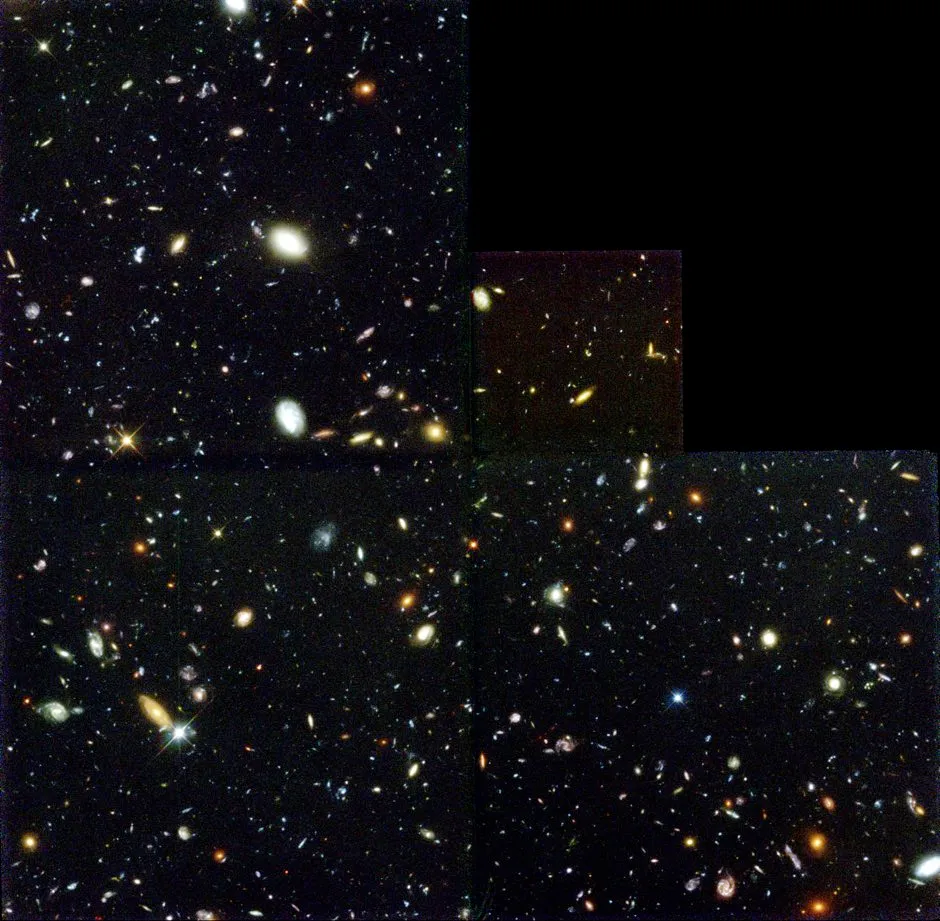
This awe-inspiring image, dappled with beautiful shapes and a whole array of colours, changed the way we think about the distant Universe forever. One of the Hubble Space Telescope’s most famous images, the Hubble Deep Field (HDF) is a snapshot of a tiny patch of sky in the constellation Ursa Major.
It covers an area of just one 24-millionth of the whole sky. And yet this minute window reveals around 3,000 galaxies crowded together, giving astronomers a vital window into the past.
There had been predictions that the light emitted from such distant objects would be stretched out so much that they would appear as nothing more than faint smudges against the blackness. They could not have been more wrong.
This image, made up of 342 separate exposures taken over more than 100 hours, showcased the power of Hubble. It revealed an incredible amount of detail and structure to galaxies that had never been seen before.
Discover more about the Hubble Space Telescope:
- 10 of Hubble’s greatest discoveries
- Beautiful Hubble Space Telescope images you probably haven’t seen before
- 10 future space missions to look forward to
- Who really discovered Hubble’s Law?
“A lot of astronomers were sceptical that we would learn a lot from simply pointing the telescope at a fairly arbitrary spot in the sky and taking long exposures,” says Dr Henry Ferguson, a member of the original HDF team.
However, the plethora of information that appeared convinced most that this was a good technique. As the telescope’s capabilities were upgraded, projects such as the Hubble Ultra Deep Field continued where HDF left off.
Today, astronomers are finding galaxies from a time when the Universe was only 500 million years old. As a result, it has become possible to chart galaxy evolution directly, by measuring how properties such as size, shape and colour change over time.
“The HDF became one of the major ‘watering holes’ for studying galaxy evolution, with deep observations spanning X-ray to radio wavelengths,” continues Dr Ferguson. “It is one of the most important observations ever made with any telescope!”
From BBC Sky at Night Magazine:
- Hubble at 30: three decades of the famous space telescope
- 'How we serviced Hubble': Mike Massimino reveals all
- How Hubble’s successor the James Webb Space Telescope will observe the Universe
- Astronaut Kathy Sullivan on launching the famous space telescope
- What was wrong with Hubble’s mirror, and how was it fixed?
- Radio Astronomy Podcast: 30 years of the incredible space telescope
- How did the space telescope come about?
- What Hubble's launch meant to me, as an amateur astronomer
- How Hubble changed our view of the Universe
- Why did astronauts service the Hubble Space Telescope?
- How the Hubble Space Telescope is used to study exoplanets
- A history of the Hubble Space Telescope
